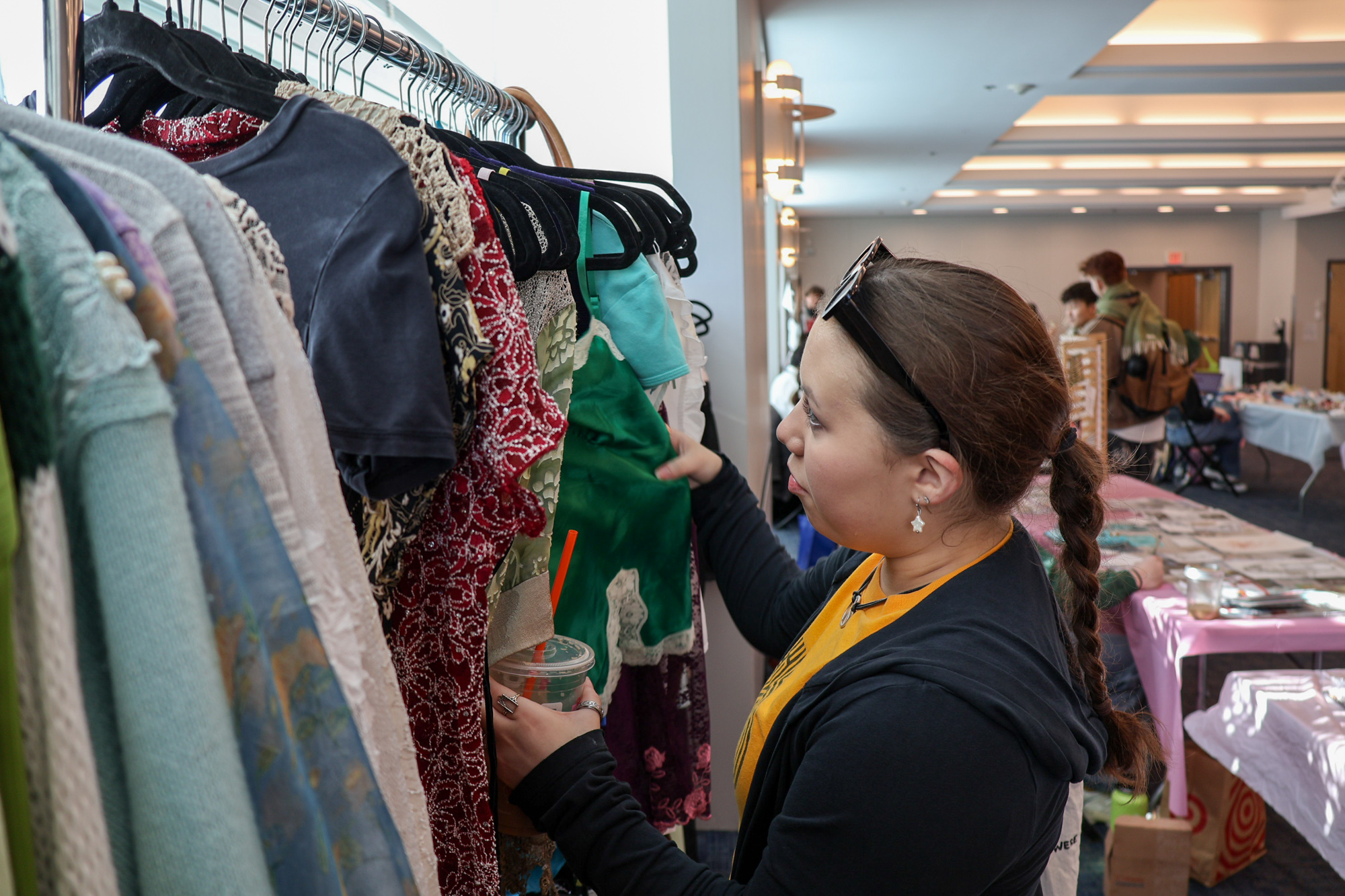Students weaved through rows of plastic tables showcasing vibrant, handmade art at the Fabrio Art Market, where vendors sold and traded everything from modified clothes and totes, to handmade art and jewelry, to resin dice and gel nails.
The event, hosted by Fabrio, Boston University’s first student-run sustainable fashion magazine, was held at the BU Photonics Center on Nov. 17.
Malachi Roth-Cohen, the project director of Fabrio and a sophomore, said the market originated from “the idea of wanting to create an environment that facilitated trading and the showing of people’s art.”
“The people that were brought here today clearly displayed that this is the heart of the BU art scene,” he said.
Most vendors found their way to the market through word-of-mouth, mutual connections and shared classes, illustrating the network of Fabrio’s connections.
Jorge Lozano, president and founder of writing club and zine The Plot Point and a junior, ran one of the tables at the event.
Lozano said the club aims to “lift each other’s voices up” and show “people’s voices to the world.”
In addition to showcasing the first-ever issue of their zine at Fabrio market, Lozano’s table housed an illustrator who drew palm-sized portraits for students.
Lozano said many students from The Plot Point are involved in Fabrio as well.

“That’s how we got involved,” Lozano said. “I love Fabrio. They’re a great group of people, and this market was an amazing opportunity.”
He said the interactive nature of the market allowed The Plot Point to find new members.
“Physical spaces like this are absolutely crucial to get the community to be well-knit and more sympathetic with each other,” Lozano said. “That way, all our different passion projects and beliefs can come together as one.”
Eli Lynch, a senior, sold resin dice at the event and showcased their company, White Rose Dice.
Primarily used for table-top role-playing games such as Dungeons and Dragons, these dice vary in shape and color, with up to 20 sides each.
Lynch makes the dice “all from scratch,” a process they said takes three to five days.
Lynch signed up to be a vendor at the market despite not being “exactly the target audience,”.
“Being here is really nice because I get to interact with people, meet new people, but also get my name out there in a more personal sense,” Lynch said.
Though White Rose Dice is an online store, Lynch noted the benefits of a physica2l market from a business standpoint.
“Instagram, with the algorithm and everything, it can turn on you at any moment and Etsy can be unforgiving also,” Lynch said. “It’s nice to have an extra space.”
Roth-Cohen said Fabrio’s physical market “allows more of a scene to be set” than online shops do, and students can “create real bonds.”
He said he hopes there will be similar efforts to create a physical space for artists to collaborate and network in the future.
“I think there’s a very big, untapped market within the art community at Boston University, and we need to show that off more,” Roth-Cohen said.
